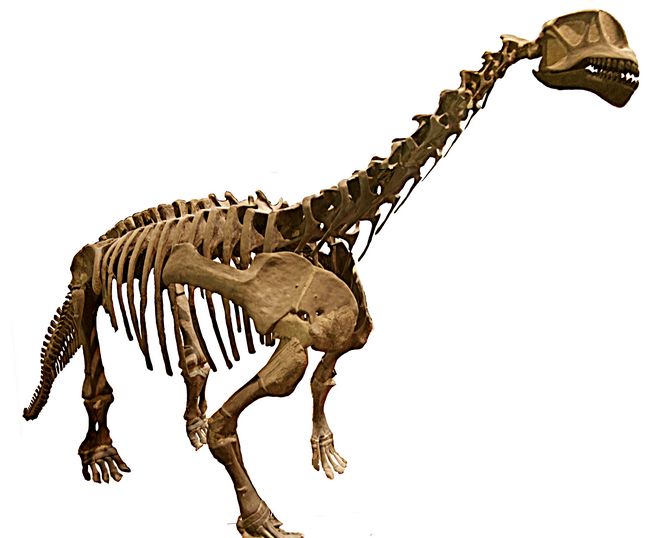Athena Review Image Archive ™
Camarasaurus lentus skeleton of juvenile

Skeleton of a Camarasaurus lentus juvenile (YPM; photo: Athena Review)
Camarasaurus was a Jurassic plant-eating dinosaur It had short, robust jaws and large, chisel-shaped teeth up to 19 cm long, suited for eating tough plants. Camarasaurus means "chambered lizard", which refers to large paired openings in the neck and truck vertebrae which are called pleurocoels. These pneumatic openings were air sacs connected to the lungs, and served to lighten the weight of the skeleton, facilitating the extension of the neck for reaching tree leaves and other plant. The front limbs had five toes, with the inner toe having a large, sharpened claw.
Camarasaurus, among the most abundantly found sauropod dinosaurs in the Morrison Formation in Colorado, Utah, and Wyoming, is grouped into three species which lived in the Late Jurassic period (155 -145 mya). C. supremus, the largest species, first discovered in 1877, reached a maximum length of 23 m. A second species, C. grandis, was also discovered in 1877. The most common species, C. lentus, first found in 1889, was about 15 m long as an adult. This skeleton of a juvenile C. lentus, now in the Yale Peabody Museum, was found in 1890 in Como Bluff, Wyoming, dating from about 150 mya.
References:
Foster, John 2007. Jurassic West: The Dinosaurs of the Morrison Formation and Their World. Indiana University Press.
Copyright © 1996-2020 Rust Family Foundation (All Rights Reserved).